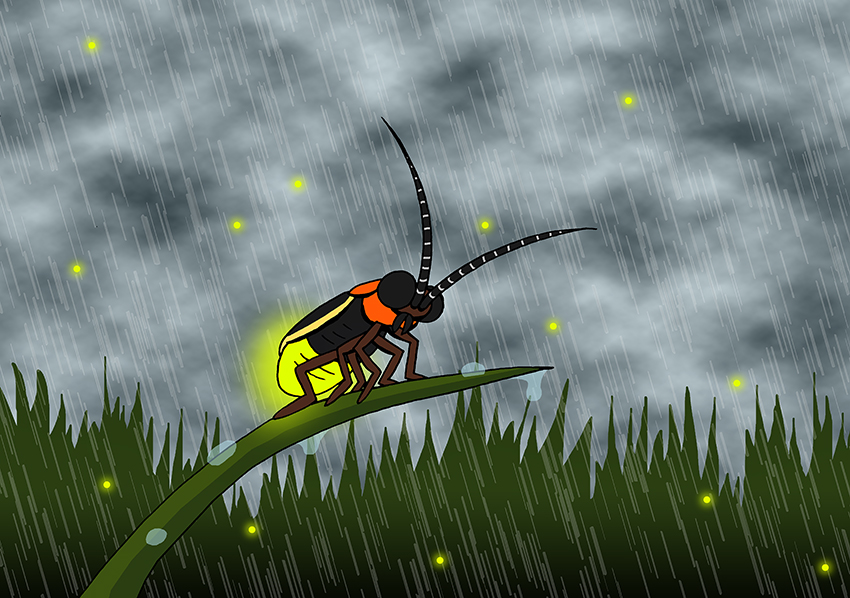Glowing, going, gone.
Although they’re usually associated with summer, fireflies can still be found lighting up the sky this fall. However, they won’t stay around for long. According to Texas firefly researcher Ben Pfeiffer, these glowing insects will probably disappear sometime later this month.
Pfeiffer said populations of fireflies are active every September, but this year they’re more noticeable because their populations are bigger due to an abnormally wet summer.
While most fireflies hatch during late spring, a second generation of fireflies emerge in the fall from eggs laid in the spring. Rob Plowes, UT research scientist at Brackenridge Field Laboratory, said most firefly larvae will spend an entire year underground waiting for spring, but if conditions are right, populations can grow quickly and more will emerge in the fall.
“A nice warm, wet spring followed by a warm, wet fall, not too hot, allows for a second generation to occur,” Plowes said.
These weather conditions provide more food for firefly larvae, Plowes said.
“[Fireflies] are equipped to spend a whole year underground if they need to,” Plowes said. “If they get really good conditions, they can grow really quickly and mature quickly. Those pupae, instead of having to wait for the next spring, could reemerge if they have similar wet and fairly warm conditions in the fall.”
According to firefly.org, a website Pfeiffer created to inform people about fireflies and to collect firefly sighting data, most firefly species like to live near water and prefer humid, warm environments. This means warmer areas of the U.S. are more likely to see this second wave of fireflies that could last into October.
The abundance of rain in Texas due to an El Niño weather pattern over the last two years has also been a factor in growing firefly populations, Pfeiffer said.
“A lot of insects wait for just the exact right conditions in order to come out,” Pfeiffer said. “This year, we’ve had a lot of those right conditions, one right after the other.”
These two years of rainy weather came right after a serious drought in Texas. According to Plowes, there was some concern that the prolonged dry weather conditions could reduce the fireflies’ numbers enough to cause the local extinction of some populations.
“It turned out that these insects can sometimes continue at very low numbers through these very dry periods, and it just takes them a couple of generations to build back up in numbers,” Plowes said. “If you have, as we just had, a couple of good years, a couple of good seasons, that really allows the population to grow.”
Pfeiffer said even in drought years he could always find some fireflies, but the populations were just smaller and less noticeable due to undesirable conditions.
“Fireflies have been there, they’ve just been in more isolated populations,” Pfeiffer said. “If you look hard enough, you’re going to find them.”
Pfeiffer encourages anyone interested in learning more about fireflies to go outside and catch them. He said good places in Austin to look for fireflies are Barton Creek, Pedernales Falls State Park and the Greenbelt.
“If you want to see them again, get outdoors now to look and see what’s coming out in the fall — but also in the spring [it] is going to be really great too,” Pfeiffer said. “So go out there, catch a few in a jar, look at them closely, watch their flash patterns, learn to identify different fireflies. There are other people who say don’t touch them unless you’re a researcher, but the only way you’re going to learn is to stimulate your curiosity.”















